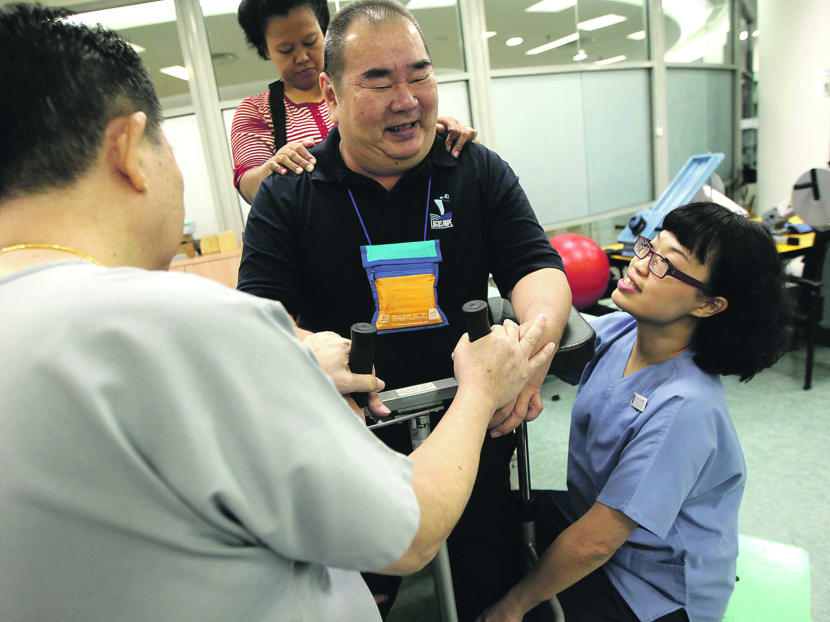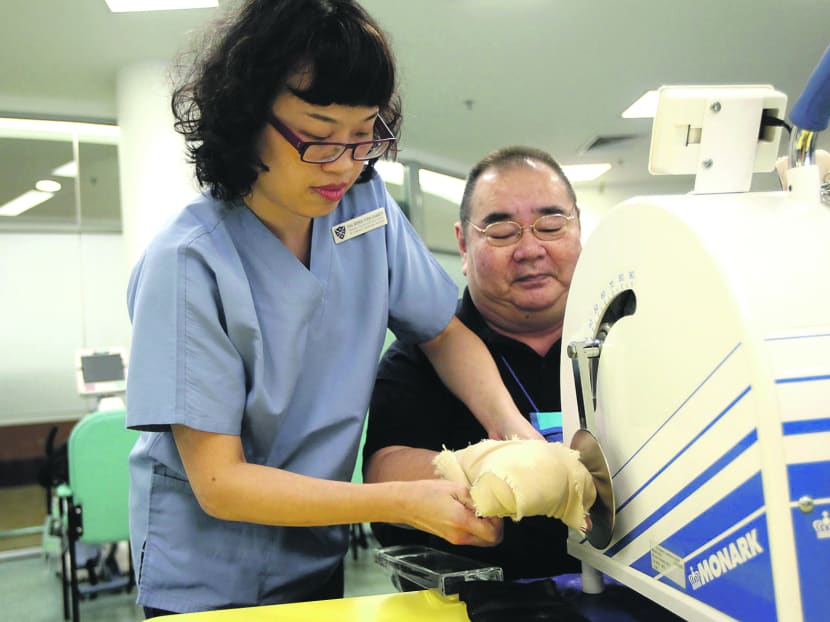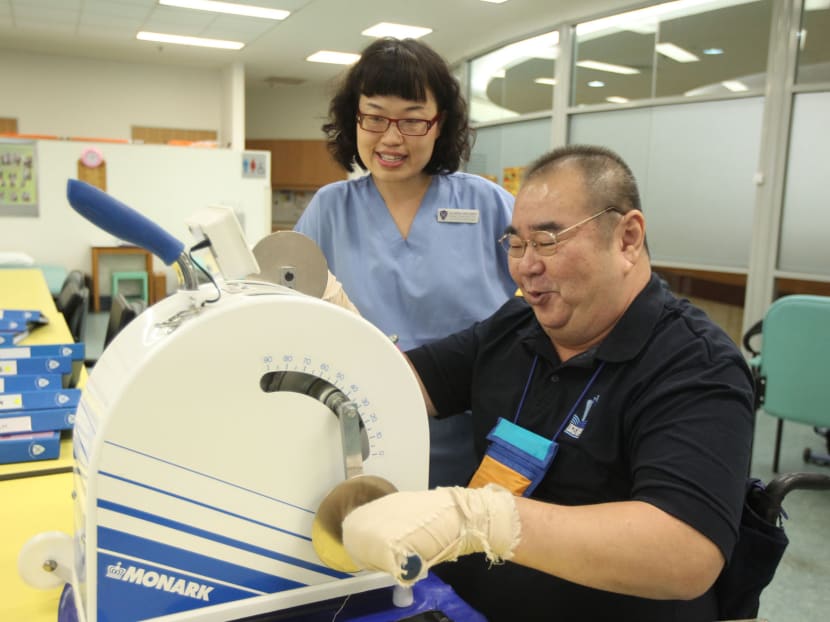Boosting productivity to deliver better care
SINGAPORE — One day four years ago, physiotherapist Charity Chu found herself overbooked with patients and could only spend 10 minutes with one who had booked a one-and-a-half-hour rehabilitation session. However, before she could make it for the next session, the patient had died.



SINGAPORE — One day four years ago, physiotherapist Charity Chu found herself overbooked with patients and could only spend 10 minutes with one who had booked a one-and-a-half-hour rehabilitation session. However, before she could make it for the next session, the patient had died.
That spurred Ms Chu — now a Principal Physiotherapist and Manager with St Andrew’s Community Hospital Day Rehabilitation Centre — to improve the centre’s booking system and attendance rates to raise efficiency levels and standards of care.
In 2009, for every 10 patients scheduled for therapy sessions, only five or six would turn up. “We felt we (could) overbook, since most of the patients didn’t turn up,” said Ms Chu. But when everyone did show up, therapists ended up with insufficient time with patients.
To address the issue, Ms Chu and her team decided to implement a case management system to follow up with patients if they missed two or more consecutive sessions, so as to understand their reasons.
Since implementing the system, the centre has seen attendance rates improve to 80 per cent. Ms Chu, who is speaking at the Intermediate and Long-Term Care (ILTC) Sector Quality Festival tomorrow on improving productivity in the sector, said new therapists felt uncertain about the system. To overcome that, senior therapists were attached to their newer colleagues to guide them.
The centre — where 85 per cent of patients are seniors above 60 years old — has also begun providing customised care. Last year, after it piloted a programme for patients with mild to moderate dementia, the centre decided to split patients into groups, based on their individual levels of responsiveness to visual or verbal instructions, for therapy suitable to their needs.
For example, a senior who used to knit was found to be sensitive to colours. “If you ask her to pick up a pen for me, she probably will not do it. But if you ask her, ‘Can you pick up something yellow?’, then she will pick it up,” Ms Chu said.
Other customised care initiatives include the Stroke Gym classes introduced in April this year for stroke patients who can walk and dress themselves. For this group, the aim was not to help them walk, but to help them walk more quickly, said Ms Chu.
BETTER CARE, ON LIMITED RESOURCES
The Agency for Integrated Care (AIC) currently refers about 40 cases to the centre each month, compared to 15 referrals a month in 2010. This has increased waiting time for patients from about a week to an average of three to four weeks.
Ms Chu said they are in talks with the AIC to reduce the number of referrals to achieve “that equilibrium”, where waiting time is capped at two to three weeks.
It has also been a challenge to hire enough staff. The centre currently has eight occupational and physiotherapists, up from three of them in 2010. But therapists who are hired may not arrive in time to handle any surge in cases.
However, Ms Chu pointed out that boosting productivity was not solely about yardsticks like attendance rates — staff should see attendance as part of the “process” to ensure patients get more therapy time. “It ultimately boils down to that, where we want to provide the best care for our patients,” she said.





